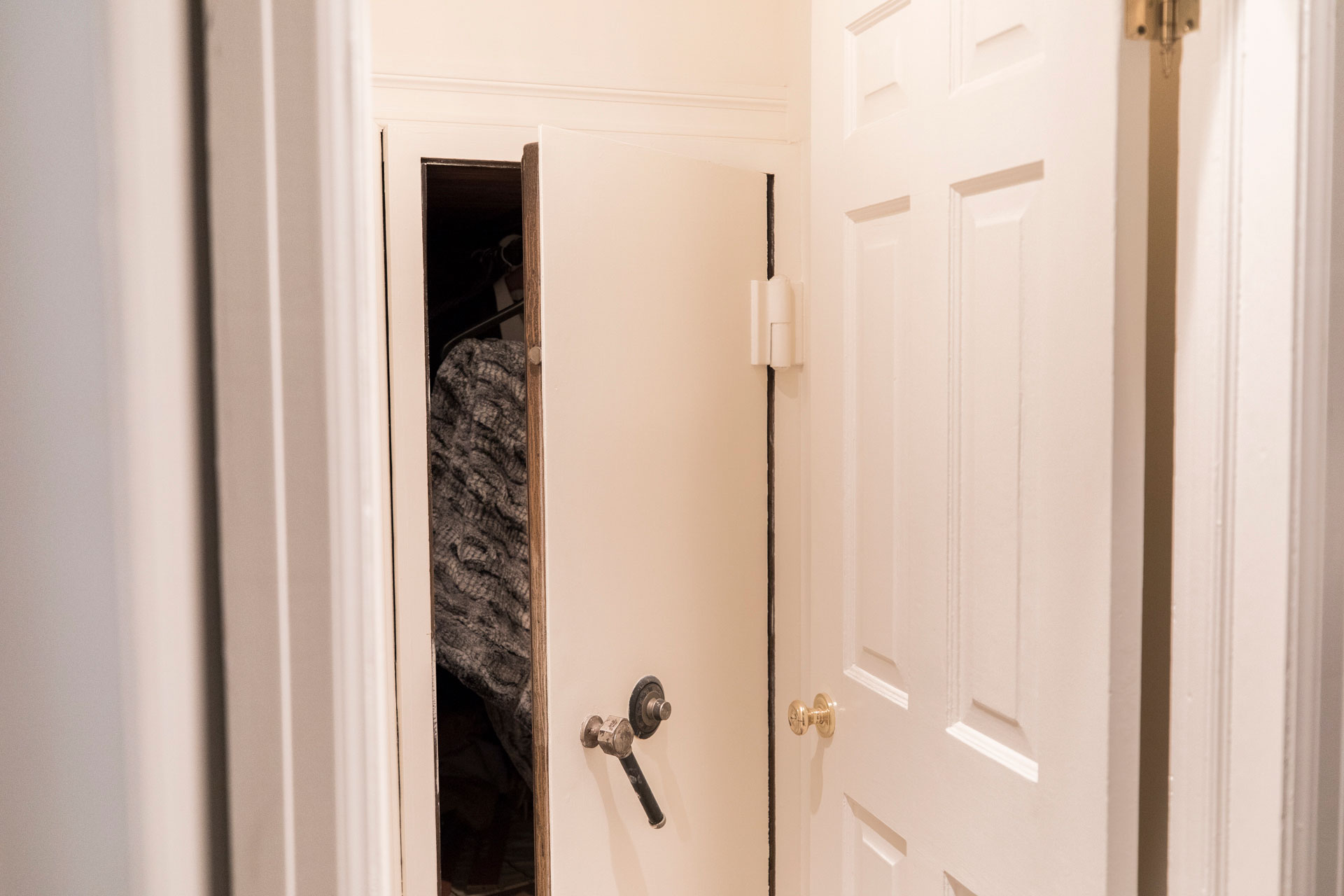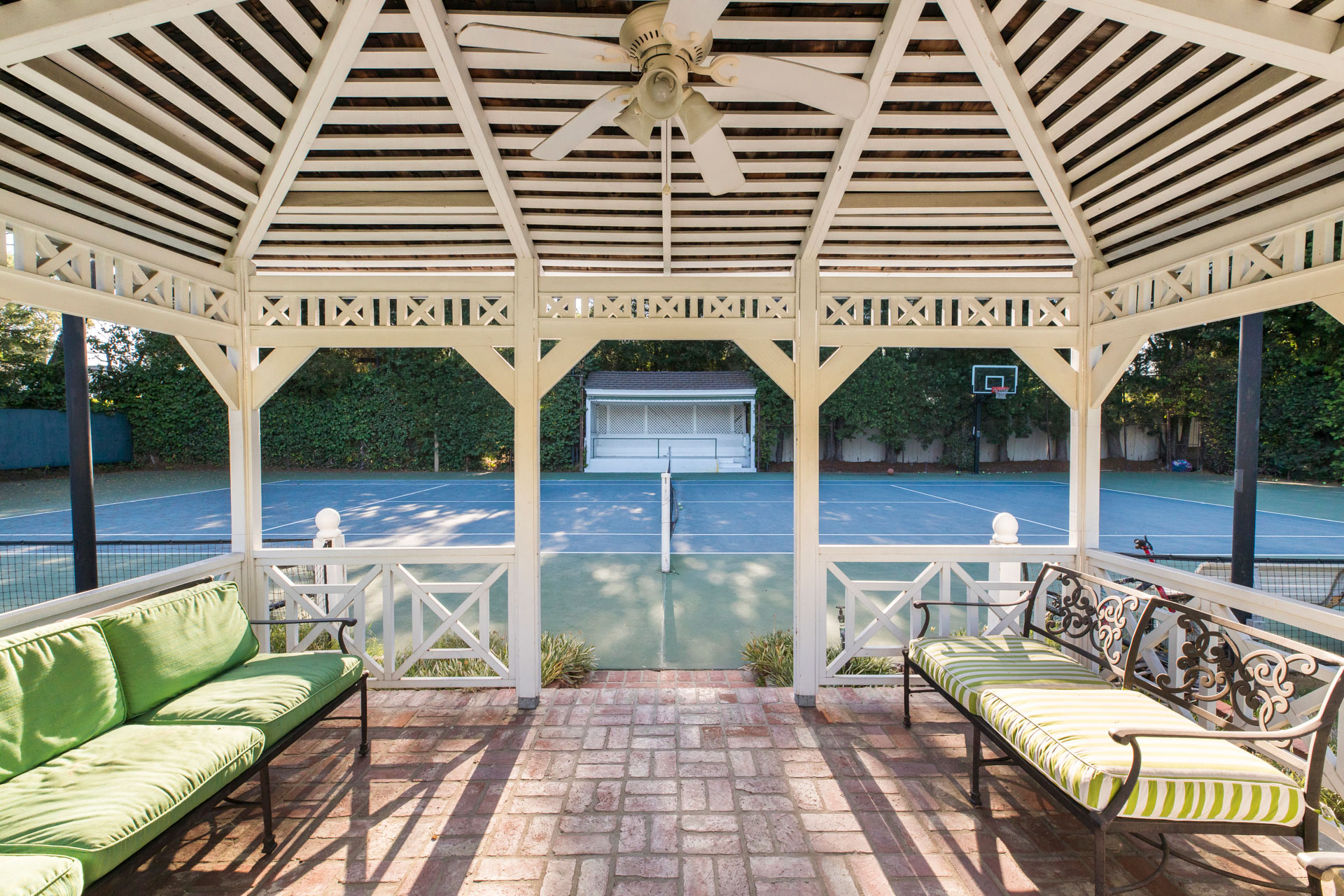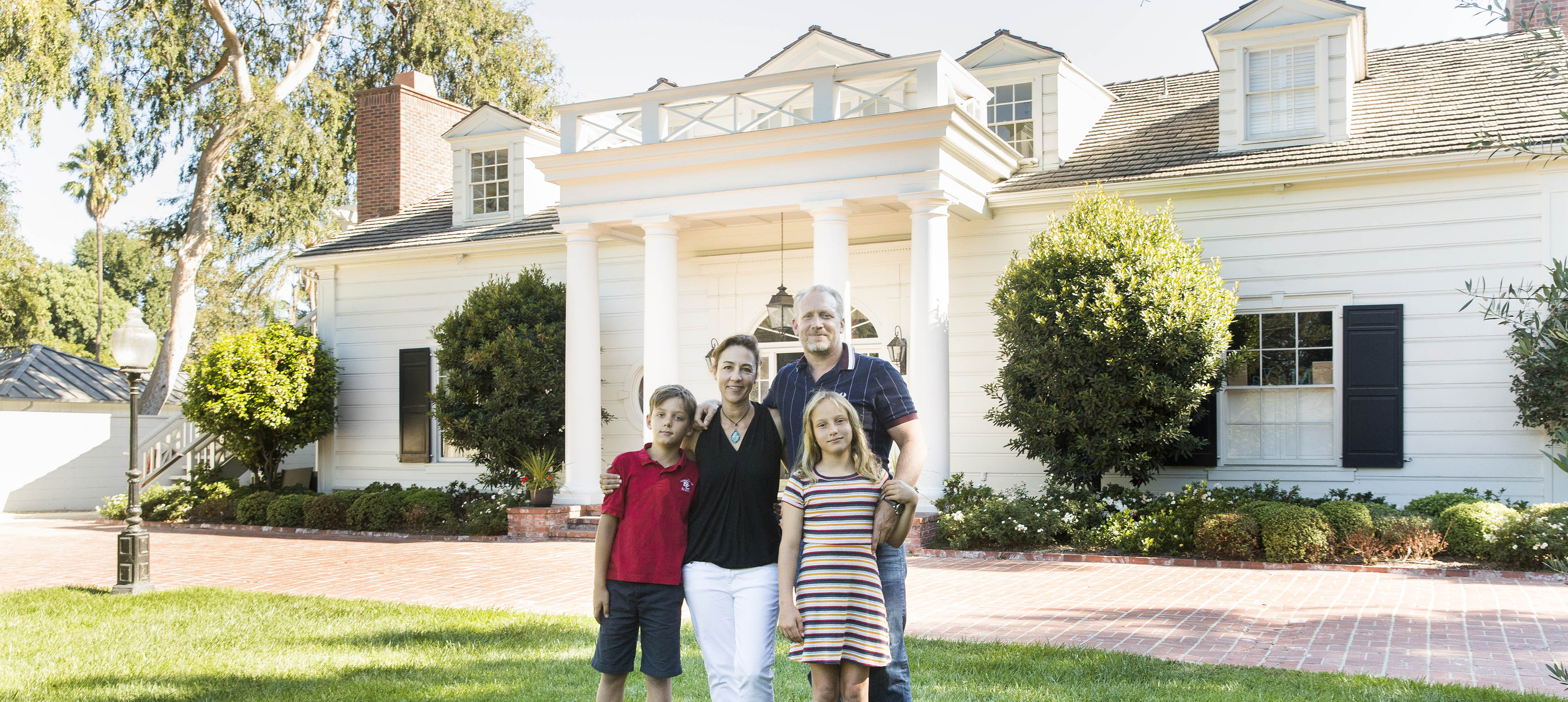

In 1933, Bing Crosby signed a five-film contract with Paramount Pictures and relocated from New York to Hollywood. With their first child due in June, he and his wife, Dixie Lee, began building their first home in a peaceful, family-friendly area not far from the studio — Toluca Lake.
Although his movie career was just starting, Crosby was already a successful and influential performer, nationally beloved for his spirit-lifting songs during the Great Depression. “People forget Bing was reportedly the highest-grossing singer, the most popular and well-recognized, from the early ’30s until Elvis came along in 1956,” says Bob Carter, who currently resides with his wife, Darlene, in the Crosbys’ first Toluca Lake house. Crosby dominated radio, the music industry and the silver screen — he not only made more studio recordings than any other singer, but he also charted the most No. 1 hits (38) and the most popular record ever (“White Christmas”), and he appeared in 104 films. “And of course, let’s not forget that he won multiple club championships at Lakeside Golf Club,” Carter adds. Crosby brought his major star power to Toluca Lake for a decade, and his legacy as one of its most prominent residents continues today.
Foundations on Forman
The Crosbys’ 1933 home at the corner of Forman and Toluca Lake avenues is a charming 5,000-square-foot English Tudor. (Bing also bought a house on Ponca Avenue for his parents.) Dixie’s father, Evan Wyatt, supervised the construction, including many custom-designed details. Of one, the small balcony overlooking the foyer, Wyatt reportedly joked, “That’s so Bing can sing to his guests as they arrive.” Other features reinforce Crosby’s reputation as a partier, especially in the den, where he would hang out with friends after games at Lakeside. “Some of the motifs in the stained-glass windows are playing cards and beer,” Carter says. “This must have been the original man cave.”
By 1936, the Crosbys had three sons and wanted a larger place for their growing family — a fourth boy would come along in 1938 — so they sold the Forman home to two other famous entertainers, Al Jolson and Ruby Keeler. (The couple bought the place for Keeler’s parents and built their own house in Encino; however, when Keeler and Jolson split in 1939, she and their son took refuge in Toluca Lake with her parents. Carter recalls that Keeler’s niece, who was born in the house, stopped by to see it a few years ago and reminisced about spraining her ankle on the stairs “sometime in the late ’30s.”) After that, the house didn’t make headlines again until Getty Oil executive Sid Petersen bought it in 1976, living there with his family until 1992.
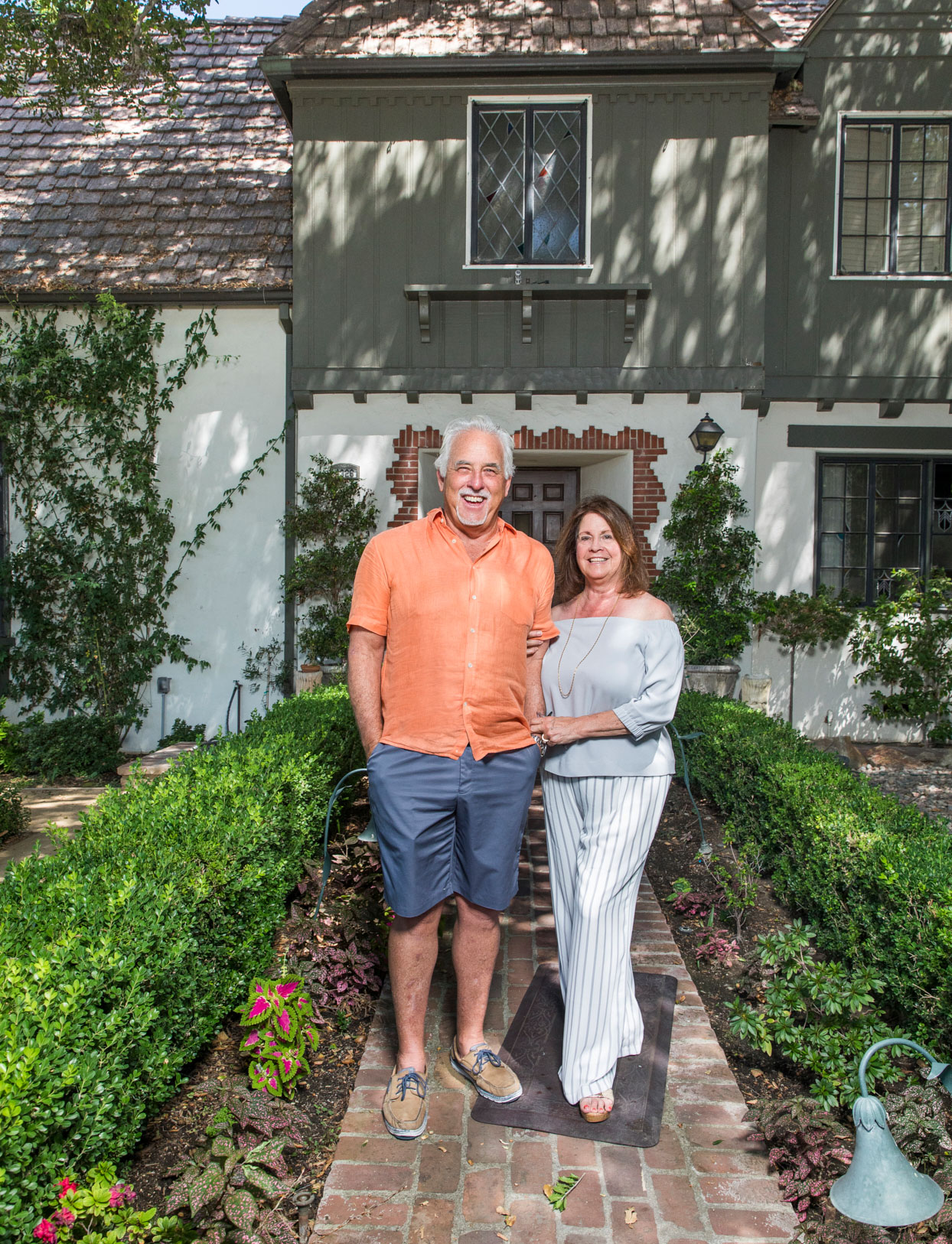
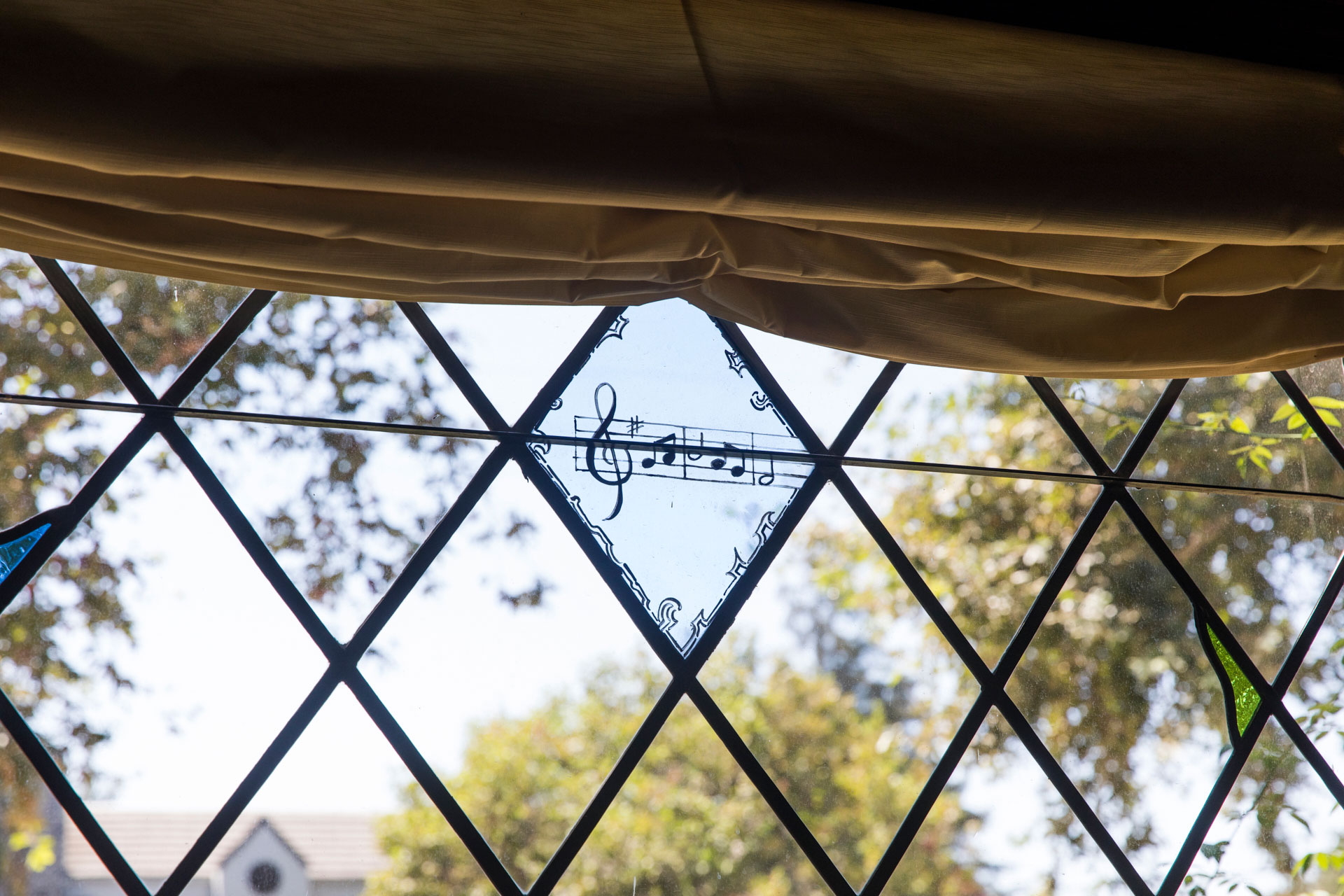
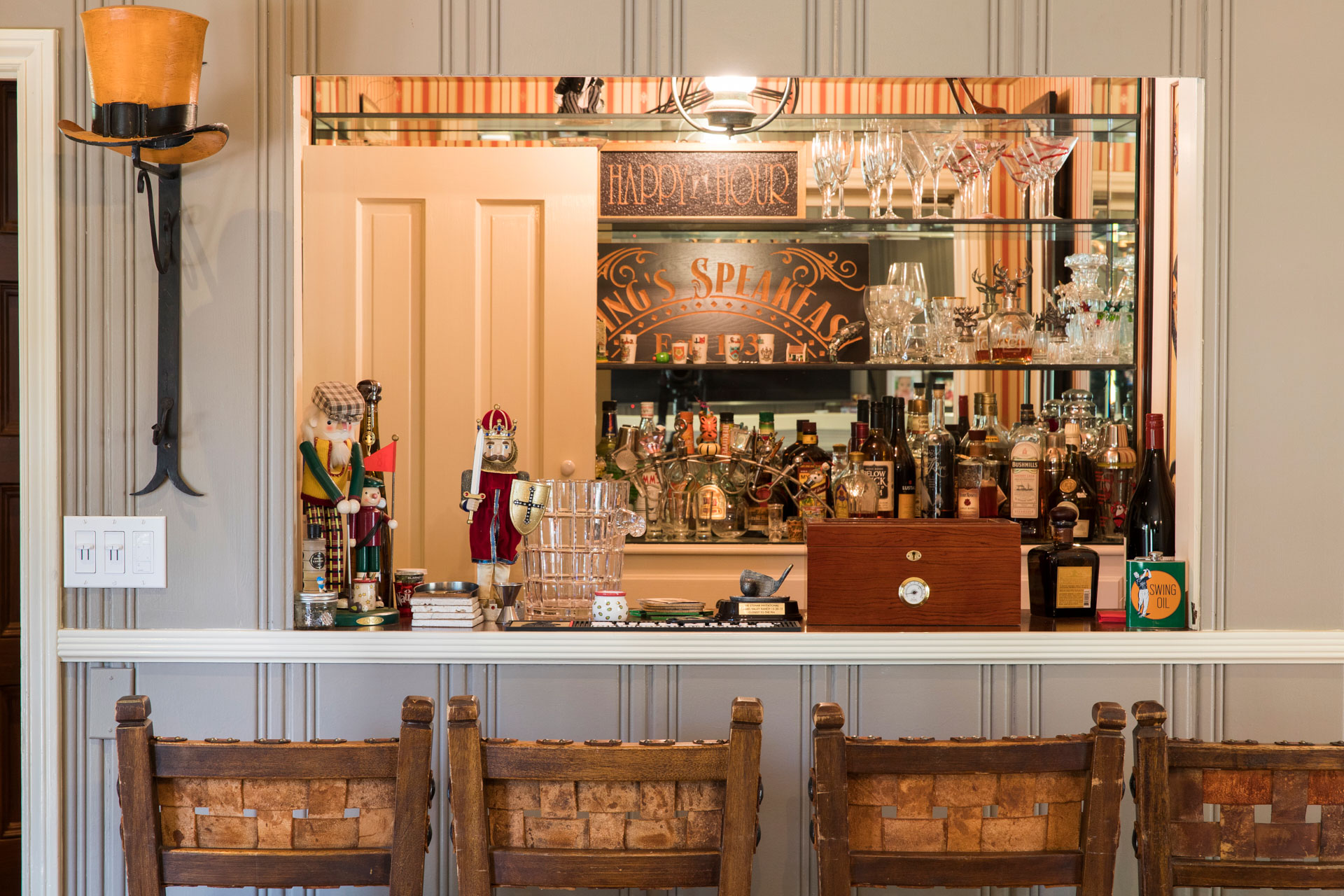

Bob and Darlene Carter’s own history with the home goes back to the early days of their marriage. “Our first house was close by in Burbank, near Magnolia and Rose, a cute little English Tudor,” Bob remembers. “We used to ride our bikes by the house on Forman, gazing at its amazing architecture and whimsical side gate and thinking, ‘What if someday…?’ It was truly our dream house, for sure.”
In 2012, after raising their children in Glendale and La Cañada Flintridge, they wanted to make their Toluca Lake dream a reality. Through a series of coincidences, and after dropping an inquiry in the mailbox, they learned that the Crosby house’s then-owners, director Andrew Weyman and actress Terry Davis, happened to be clients of a friend, who told the Carters that they might wish to sell the home in the coming year. Following a brief phone call from Weyman, they decided to meet. Approaching the house’s front entry, the Carters thought there was no way they could afford the place. But, Carter says, “Andrew and Terry were really engaging, and I guess they loved the idea of a private sale without having to list the house and have people walking through it. So we sat on the patio and enjoyed some Chardonnay and banged out a deal. And then they showed us a postcard of Bing standing at the front door — we didn’t even know it was Bing Crosby’s house! So it was kind of a meant-to-be thing.”
Although some renovations have been needed, such as turning the original carport into a garage, the Carters want to preserve the look and feel of the house. “We feel very privileged to be living here, especially after coming from rather meager beginnings growing up, and not being the wealthiest people,” Carter says. “So it’s very gratifying to be able to live here and be a custodian of the history, and maintain it, and respect it.”
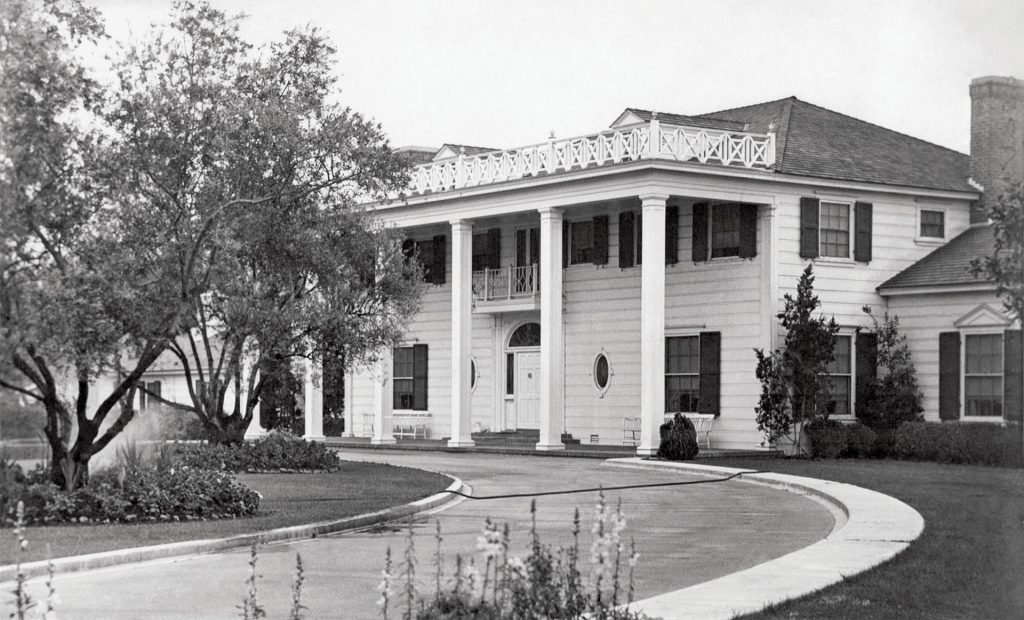
The Colonial on Camarillo
In 1936, the Crosbys built a southern-colonial-style home on Camarillo Street between Ledge and Cahuenga, plus a smaller colonial across the street for Bing’s parents. Designed by J. Robert Harris and decorated by interior designer Harold Grieve, the 20-room main house was grand but not formal. The 4-acre estate was ideal for an active family, with a large pool and a tennis court. By most accounts, the Crosbys were happy there, hosting star-studded parties and welcoming celebrity visitors. Bing’s career was booming, and in 1940, he starred in Road to Singapore with Hollywood newcomer Bob Hope, the first of the seven popular movies they would make together. The Hopes stayed in the Crosbys’ guesthouse while their own Toluca Lake estate was being built, and both families were active members of St. Charles Borromeo Church in North Hollywood, with the Crosby boys attending the parish school.
Unfortunately, the Camarillo home is best known for the catastrophe that struck on January 3, 1943. Either Dixie was taking down the Christmas tree or eldest son Gary was playing with its lights when one of the bulbs sparked and set the dry branches aflame; the fire quickly spread up the nearby drapes to the second story. Dixie, the children and the servants managed to escape, although the boys’ spaniel, Timmy, died of smoke inhalation. Bing, reportedly dining at the Brown Derby with Fred Astaire, rushed home and, according to legend, pushed past the firefighters and through the front door to retrieve his golf shoes from the foyer coat closet. Although he was famous as a golfer, his concern wasn’t for the shoes themselves, but rather for the $20,000 to $30,000 in gambling money he kept rolled up in them.
Most of the second story burned, and between the smoke and water, damage was estimated at $200,000 — not including the tremendous loss of valuables and priceless memorabilia, including a complete collection of Bing’s recordings and thousands of dollars’ worth of Dixie’s furs and jewelry. Materials to rebuild were scarce during World War II, so the Crosbys ended up selling the house and moving to Holmby Hills, where they lived for 20 years.

A Future Monkee Moves In
It’s unknown who bought and rebuilt the Crosby home (in a similar but modified colonial style), and the next few decades of its history are hazy — except for a year or two around 1947, when George Dolenz and Janelle Johnson took up residence with their toddler son, Micky.

“My dad was an actor, and my mom was an actress, and they met doing a play and moved to a chicken ranch in Tarzana,” Micky Dolenz explains. “His day job was as the maître d’ at the Trocadero, a very famous restaurant and nightclub on Sunset Boulevard in Hollywood. And one night he ended up standing next to Howard Hughes in the men’s room.” They struck up a conversation, and upon hearing the maître d’ was also an actor, Hughes signed him to a lucrative contract with his studio. The steady income was enough for the Dolenzes to upgrade their home, and they purchased the Crosby house.
“My mom used to tell me that they couldn’t afford the staff to keep up such a big estate — full-time maintenance, pool, gardener, etc.” Dolenz says. “Because my dad was very handy with tools and stuff, he would go out and do the gardening. He would be mowing the lawn or trimming the trees or something, and the Hollywood tour buses would drive by and say, ‘And this is the former house of Bing Crosby, now owned by George Dolenz, the actor under contract to Howard Hughes, and oh, look, there’s the gardener!’ And everybody would wave, not knowing it was my dad.”
Hughes put George in only one film, 1950’s Vendetta, and the actor grew restless. “He wasn’t working,” Micky says. “He was getting money, but just mowing the lawn. So he got out of his contract somehow, and we moved to Studio City, to a much different kind of house.” Micky was too young to remember his time in the Crosby home except for vague memory of falling into the pool, but he speaks vividly of his later childhood in the Valley — attending local public schools, riding his bike around the neighborhood picking apricots and walnuts with his sister Coco, and hanging out at Bob’s Big Boy in Van Nuys. (He later would talk his fellow Monkees into cruising to Bob’s for lunch in the Monkeemobile, in costume, while they were shooting on location nearby. “That was before the show went to air, so no one had any idea who we were — they must have thought we were the strangest four dudes in the world,” he says.)
“Either you get the Valley or you don’t,” he concludes. “You like it or you don’t. I’ve almost always been in the Valley and I’ve always liked it.”
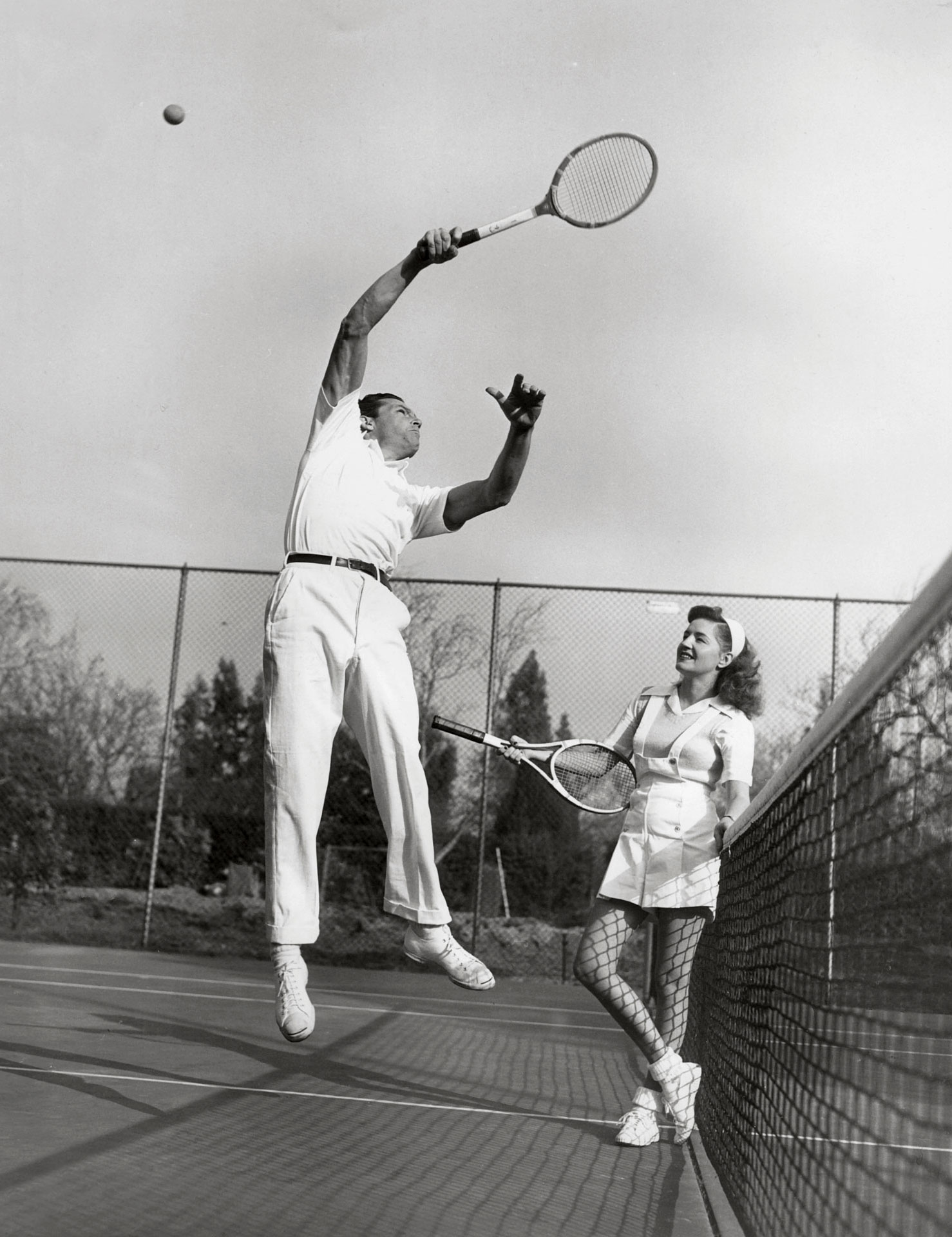


Tracing the Legend
“I thought he was just messing around.” That was the reaction of Larry Stickney, who owned the Crosby house from 1997 to 2011, when he met Micky Dolenz at a party and heard he had once lived there. “Then he showed up with photos and I had to believe it.” The discovery filled in a gap for Larry and his wife, Kerry, who had devoted themselves to piecing together as much of the house’s history as they could.
“I know that somewhere in the ’50s, the house was purchased by [Chinese political leader] Chiang Kai-shek’s daughter, but she was not used to living in a huge house alone and was very uncomfortable there, so she moved into the carriage house and sold off the main property,” Stickney says.
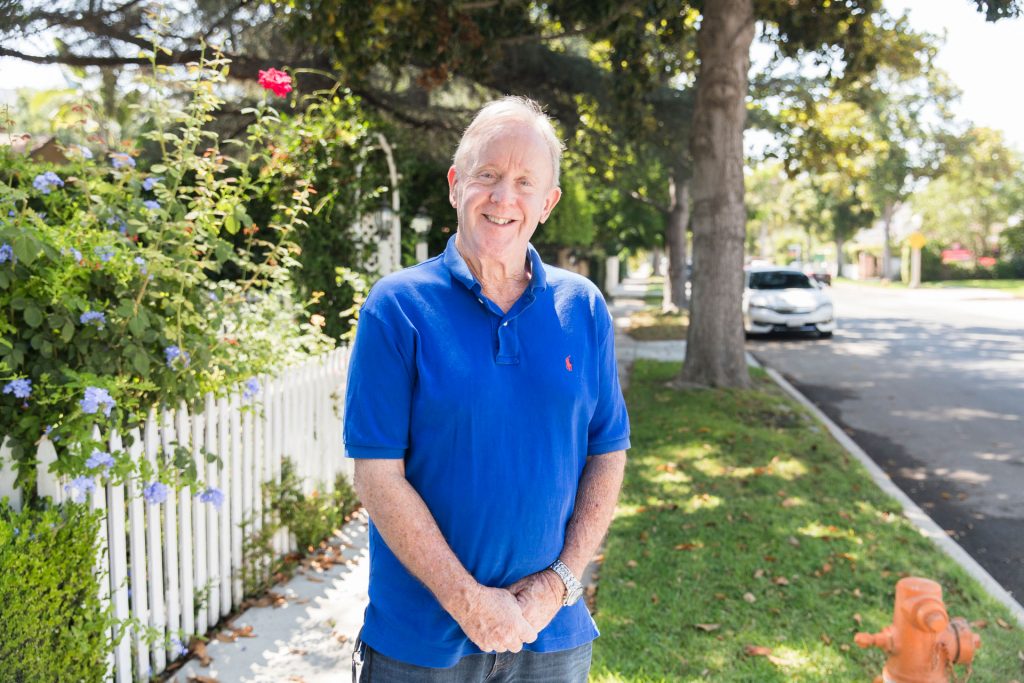
Andy Griffith was the next known owner, from the 1970s to the 1990s. “There is a story that Andy fell off the roof and broke his shoulder,” shares Stickney, who met the actor and his family several times when they stopped by to see their old house. “He was very frugal and was apparently doing his own roof repairs.”
The Griffiths then sold to actor Jerry Van Dyke and his wife, Shirley. The most significant event during their residence was the 1994 Northridge earthquake, which broke all four masonry fireplaces and toppled a 7-foot-wide chimney through the roof. It ripped a 10-foot hole in the master bedroom ceiling and barely missed the sleeping couple. “They were saved by the chimney leaning against the four-poster bed,” Stickney explains. It took two or three years to rebuild the house; the Van Dykes made several design changes in the process, notably reducing the square footage of the second story, but the overall footprint remained essentially the same.
When the Van Dykes put the house on the market in 1997, the Stickneys were renting in Studio City after having sold their Pasadena home of 25 years. “We had looked and looked and looked for a house and couldn’t find anything we liked,” Stickney recalls. “I was out of town on a hunting trip and I got a call from my wife on the way back: ‘I’ve found the house! You’ve got to see it!’ And I said, ‘I’ve been up since 4:30; I’m driving home a long ways; we’ll see it first thing in the morning.’ ‘No, you have to see it now!’”
She was right; the house’s beauty and traditional style won him over, and they soon settled in. “The neighbors were friendly, and we became close with a number of them,” Stickney says. “They were very helpful in teaching us some of the history. In terms of repairing or changing things, we wanted to stay true to it, and we wanted to get as much information as we could on the way it looked in the old days. My wife fell in love with Bing and wanted to do everything she could to perpetuate the memory of him and the house.”
The Stickneys collected Crosby memorabilia, including the original signed building permit, and delighted in historical discoveries such as the fire-singed remnants of a bathroom in the attic, vintage golf balls in the hedges and an old wooden rosary in the garage. “One of my favorite things about living there was coming across things of that era, uncovering the past,” Stickney says.
Kerry Stickney loved sharing the house with others, hosting charity parties for any group that asked. The Stickneys were also able to welcome Bing and Dixie’s last surviving son, Phillip Crosby, to the house several times and hear his recollections. “He choked up a little bit and said, ‘You know, if it hadn’t been for the fire, we could have lived here forever,’” Larry remembers. “It was a very touching thing for him.”
Continuing Legacy
After Kerry Stickney passed away in 2009, Larry put the house on the market.
“We were renting after we came to Toluca Lake, and I was jogging by, and I thought, ‘Why is that house for sale?’” current owner Kathleen Cedergren says. “I said to my husband, ‘It’s probably haunted or something.’ But I asked a neighbor, and he said, ‘Oh, no, it’s a beautiful house.’ I knew nothing about the history when I first saw it. But I thought, ‘We have to have this house.’”
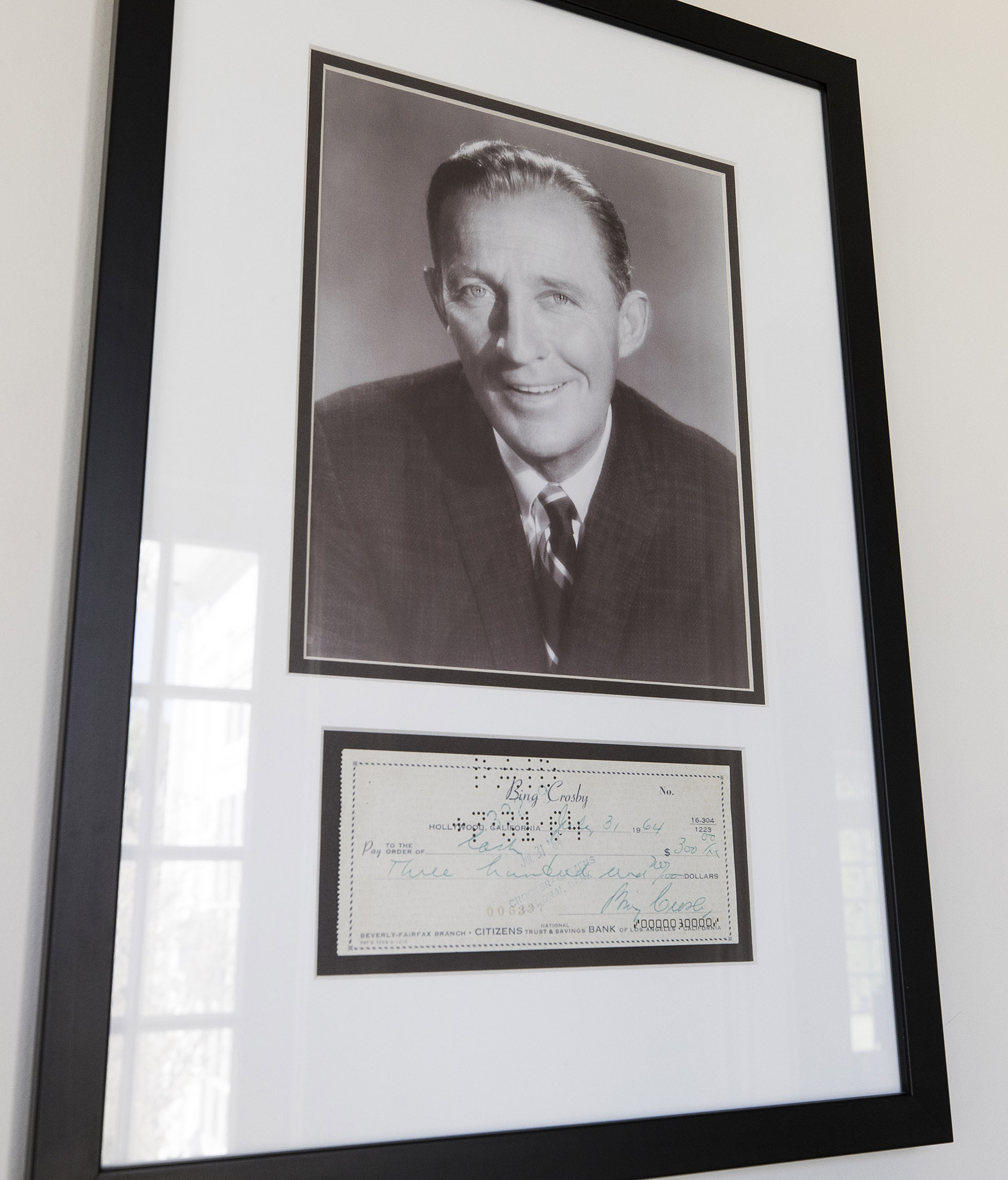


Bringing the story full circle, the Cedergrens have four children, like the Crosbys did. And, fortunately, the house has found another set of residents who see themselves as stewards of its past. Although they’ve made some renovations, mainly necessary repairs and updating the interior design, they’ve tried to stay true to what they feel is the spirit of the home.
“I think this is the most fabulous house,” Cedergren says. “I lived in England for 17 years and I grew up overseas, so I appreciate the history. I went through a couple of contractors who didn’t know anything and had no sense of history. They wanted to make it like MTV’s Cribs. I ended up finding a contractor who had experience with historical buildings, and I took my time because I wanted to honor the original elegance of the house.”
Despite fires, earthquakes and the effects of time, the home and its stories have endured. “This house has been through a lot, but when they inspected it, the guy said, ‘This is like a fortress. The foundation is so solid. It’s unbelievably well built,’” Cedergren says. “You can’t afford to build like this anymore. I love the grandness of it, the light, how open and balanced it is. It’s a big house, but it’s not in your face. I said to my husband, ‘I don’t think I could ever sell this house.’ I know I’m lucky to live here.”

